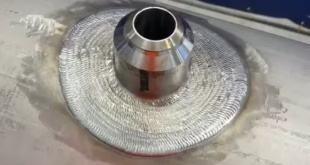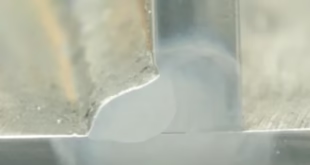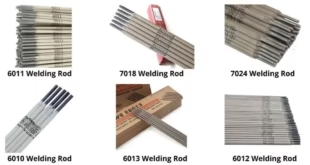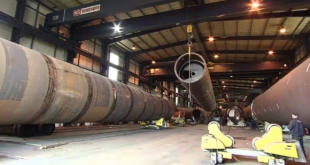Welding for Artistic and Decorative Purposes
Introduction
Welding for Artistic and Decorative Purposes opens up a world of endless possibilities, where the sparks of creativity fuse with metal to create stunning works of art. This unique form of expression combines the precision of welding techniques with the boundless imagination of artists, resulting in captivating sculptures, ornamental pieces, and functional objects.
Welding for Artistic and Decorative Purposes: Where Beauty Meets Metal
Welding for artistic and decorative purposes merges the practicality of metalwork with the realm of aesthetics, transforming cold, rigid materials into masterpieces that evoke emotions and ignite the imagination. By skillfully manipulating metal through various welding techniques, artists can shape it into intricate forms, capturing the essence of their artistic vision. Whether it’s a captivating sculpture for public spaces, an eye-catching centerpiece for a home, or an ornate gate that welcomes visitors, welding opens up a world of creative expression.
Materials Used in Welding Artistic and Decorative Pieces
Steel
- Strength and durability: Steel is known for its high strength and durability, making it suitable for creating robust artistic pieces.
- Versatility: Steel can be easily shaped, bent, and manipulated to create intricate designs.
- Wide availability: Steel is readily available in various forms, including sheets, rods, and tubes, making it accessible for artists.
- Corrosion resistance: Stainless steel, in particular, offers excellent resistance to corrosion, making it suitable for outdoor or humid environments.
- Material selection: Different grades of steel have varying welding properties, so artists need to choose the appropriate type of steel for their desired project.
- Preparing the metal surface: Proper cleaning and preparation of the steel surface are crucial to achieve strong and clean welds.
- Heat control: Steel’s high melting point requires precise control of heat during welding to prevent distortion or weakening of the metal.
- Filler materials: Depending on the project, artists may need to use filler materials such as welding rods or wires to reinforce joints and achieve desired aesthetics.
- Sculptures: Welded steel sculptures can range from abstract forms to figurative representations, showcasing the versatility and strength of the material.
- Furniture: Steel is often used to create unique and modern furniture pieces, such as tables, chairs, and shelves.
Aluminum
- Lightweight: Aluminum is known for its low density, making it significantly lighter than steel. This property allows for creating large and intricate artistic pieces without excessive weight.
- Corrosion resistance: Aluminum naturally forms a protective oxide layer, providing excellent resistance to corrosion. This makes it suitable for outdoor and marine environments.
- Reflectivity: Aluminum has high reflectivity, allowing artists to incorporate light and reflection effects into their artwork.
- Ductility: Aluminum is highly malleable and ductile, enabling artists to shape and form it into various complex designs.
- Material selection: Different grades of aluminum are available, and artists should choose the appropriate alloy for their specific project requirements.
- Cleanliness: Aluminum surfaces must be thoroughly cleaned to remove any oxide layers, oils, or contaminants that could affect the quality of the weld.
- Heat control: Aluminum has a lower melting point than steel, making heat control critical during welding to prevent burn-through or distortion.
- Aluminum-specific techniques: Welding processes such as Gas Tungsten Arc Welding (GTAW) or Pulse Arc Welding (PAW) are commonly used for aluminum, as they provide better control over heat input and minimize distortion.
- Filler materials: Matching aluminum filler materials are used to ensure proper alloy compatibility and achieve strong welds.
- Sculptures: Aluminum sculptures can range from abstract forms to intricate figurative representations, taking advantage of the material’s lightweight nature.
- Wall art and panels: Aluminum can be used to create decorative wall art, panels, or screens, offering a modern and sleek aesthetic.
- Lighting fixtures: Aluminum’s reflectivity makes it an excellent choice for creating artistic lighting fixtures, where it can enhance the distribution and diffusion of light.
Copper
- Ductility: Copper is highly ductile, allowing for intricate shaping and forming in artistic designs.
- Excellent conductivity: Copper is known for its exceptional electrical and thermal conductivity, which can be incorporated creatively into artwork.
- Natural patina: Over time, copper develops a characteristic patina, adding a unique aesthetic appeal to copper artwork.
Brass
- Alloy of copper and zinc: Brass is a combination of copper and zinc, offering a distinct golden appearance.
- Versatility: Brass can be easily worked, polished, and finished to achieve various artistic effects.
- Durability: Brass exhibits good strength and corrosion resistance, making it suitable for both indoor and outdoor applications.
The Techniques Behind Welding for Artistic and Decorative Purposes
MIG Welding: Melding Metal with Precision
MIG (Metal Inert Gas) welding is a popular technique in the realm of welding for artistic and decorative purposes. It involves feeding a consumable wire electrode through a welding gun, which creates an electric arc that melts the wire and fuses it with the base metal. MIG welding offers versatility and ease of use, making it a go-to choice for artists seeking precision and control over their creations.
TIG Welding: The Art of Tungsten
TIG (Tungsten Inert Gas) welding is another technique widely employed in the pursuit of artistic welding. With TIG welding, a tungsten electrode generates the arc, while a separate filler rod is added to create the weld. This method allows for exceptional control over the welding process, enabling artists to achieve intricate details and delicate welds. TIG welding is particularly suitable for working with thinner metals and creating seamless connections.
Arc Welding: Harnessing the Power of Electricity
Arc welding encompasses a variety of techniques, such as stick welding and flux-cored arc welding (FCAW). These techniques involve the use of a consumable electrode and a power supply to create an electric arc that melts the electrode and base metal. Arc welding is a versatile method that allows artists to work with different types of metals, making it ideal for creating large-scale sculptures and structural pieces.
Sculptural Welding: Bringing Metal to Life
Sculptural welding is a specialized branch within welding for artistic and decorative purposes, focusing on the creation of three-dimensional metal sculptures. Artists skilled in this technique employ a combination of welding methods, such as MIG, TIG, and arc welding, to bring their designs to life. Sculptural welding requires a deep understanding of metal properties, structural integrity, and artistic vision to craft captivating and durable sculptures.
Copper Welding: Patina’s Playground
Copper welding is a unique technique that embraces the captivating patina that develops over time on copper surfaces. By skillfully manipulating the welding process, artists can create controlled oxidation and patination effects on the copper, resulting in visually stunning finishes. Copper welding allows artists to incorporate the allure of vibrant blues, greens, and earthy hues into their creations, adding depth and character to their artwork.
Metal Fabrication: Unleashing Creativity with Structure
Metal fabrication is an integral part of welding for artistic and decorative purposes. Artists who delve into metal fabrication have the opportunity to design and construct unique structures that serve both functional and aesthetic purposes. This technique involves cutting, bending, and shaping metal sheets or tubes to create frameworks for sculptures, furniture, and architectural elements. Metal fabrication combines precision engineering with artistic vision, resulting in stunning pieces that seamlessly blend form and function.
Mixed Media Welding: Fusion of Materials
Mixed media welding pushes the boundaries of artistic expression by incorporating various materials alongside metal. Artists can combine metal with wood, glass, ceramics, or even found objects, creating captivating juxtapositions and textural contrasts. This technique opens up endless possibilities for creating multi-dimensional artworks that engage multiple senses and evoke thought-provoking emotions.
Commissioned Welding Art: Making Dreams a Reality
Commissioned welding art offers artists the opportunity to collaborate with clients and bring their creative visions to life. Whether it’s a custom sculpture for a public space, a personalized decorative piece for a residence, or a corporate installation, commissioned projects allow artists to showcase their skills while fulfilling the unique desires and requirements of their clients. Collaboration and effective communication are key to successfully executing commissioned welding art projects.
Safety Precautions and Equipment
Importance of safety in welding
- Hazards in welding: Welding involves various hazards such as exposure to intense heat, sparks, fumes, and potentially harmful radiation.
- Protection of the artist: Safety measures are essential to protect the artist from burns, eye injuries, inhalation of toxic fumes, and other potential risks.
- Fire and property safety: Welding can generate sparks and heat, increasing the risk of fires. Proper safety measures minimize the potential for accidents and damage to property.
Personal protective equipment (PPE)
- Welding helmet: A welding helmet with a proper filter shade protects the eyes and face from harmful ultraviolet (UV) and infrared (IR) radiation.
- Safety glasses or goggles: Eye protection is crucial to shield against sparks, debris, and other hazards.
- Protective clothing: Wear flame-resistant clothing, including a welding jacket, gloves, and trousers, to protect against burns and sparks.
- Footwear: Sturdy, closed-toe shoes with slip-resistant soles provide protection against falling objects and foot injuries.
Ventilation and fume extraction systems
- Adequate ventilation: Ensure proper airflow in the workspace to prevent the accumulation of welding fumes and gases.
- Local exhaust ventilation: Use fume extraction systems or welding booths with local exhaust ventilation to remove welding fumes at the source.
- Respiratory protection: In situations where ventilation may not be sufficient, use appropriate respiratory protection, such as a respirator or air purifying system, to protect against inhalation of fumes and gases.
Fire safety measures
- Fire extinguishers: Keep appropriate fire extinguishers nearby and ensure they are in good working condition.
- Fire-resistant barriers: Install fire-resistant barriers or screens to protect surrounding areas or materials from sparks and heat.
- Clear workspace: Remove flammable materials and maintain a clean and organized work area.
- Fire safety training: Ensure all individuals involved in welding activities are trained in fire safety protocols and know how to respond to emergencies.
FAQs
Can I weld different types of metals together?
Yes, welding allows for the fusion of different metals. However, it’s important to consider the compatibility of the metals and select appropriate welding techniques and filler materials. Proper preparation, including cleaning and preheating, is crucial to achieve strong and durable welds when working with dissimilar metals.
What safety precautions should I take when welding?
Safety should always be a top priority when engaging in welding. Some essential precautions include wearing protective gear, ensuring proper ventilation, having a fire extinguisher nearby, and working in a well-illuminated area. It’s also important to follow the manufacturer’s guidelines for the specific welding equipment being used.
Can I weld outdoor sculptures?
Yes, outdoor sculptures can be welded using appropriate techniques and materials that can withstand exposure to the elements. Stainless steel and weather-resistant coatings are commonly used to ensure durability and longevity of outdoor welded sculptures.
How can I learn welding for artistic purposes?
There are various options for learning welding techniques for artistic purposes. Local vocational schools, community colleges, and art centers often offer welding classes. Additionally, online resources, tutorials, and workshops provide opportunities to enhance your welding skills and explore different artistic welding techniques.
Can welding be used for functional pieces as well?
Absolutely! Welding techniques can be employed to create functional pieces such as furniture, decorative gates, light fixtures, and more. The versatility of welding allows artists to combine form and function, resulting in unique and practical objects that add a touch of artistry to everyday life.
What is the best type of welding technique for beginners?
For beginners in the realm of welding for artistic and decorative purposes, MIG welding is often considered a good starting point. MIG welding is relatively easy to learn and offers a high degree of control, making it suitable for beginners to practice their welding skills while creating artistic pieces.
Conclusion
Welding for artistic and decorative purposes is a captivating blend of craftsmanship, creativity, and technical skill. It offers artists the opportunity to transform metal into mesmerizing sculptures, intricate ornaments, and functional objects that enhance both indoor and outdoor spaces. From the precision of MIG and TIG welding to the versatility of arc welding and the allure of copper welding, the techniques and possibilities are limitless.
Through metal fusion and manipulation, artists can express their unique visions and captivate viewers with the beauty and ingenuity of their creations. Welding for artistic and decorative purposes allows for the exploration of mixed media, the creation of commissioned works, and the integration of design principles into the welding process.
As with any form of art, safety is of paramount importance, and artists must prioritize protective measures throughout their welding journey. Whether you’re a beginner venturing into the world of welding or an experienced artist seeking new avenues of expression, welding for artistic and decorative purposes invites you to unleash your creativity and push the boundaries of metalwork.
 Welding of Welders All about Welding and Welders
Welding of Welders All about Welding and Welders






